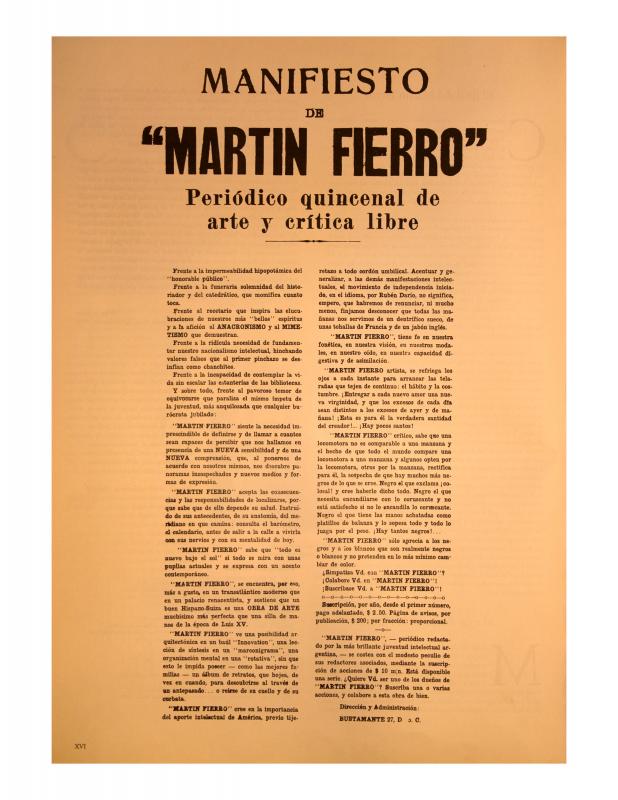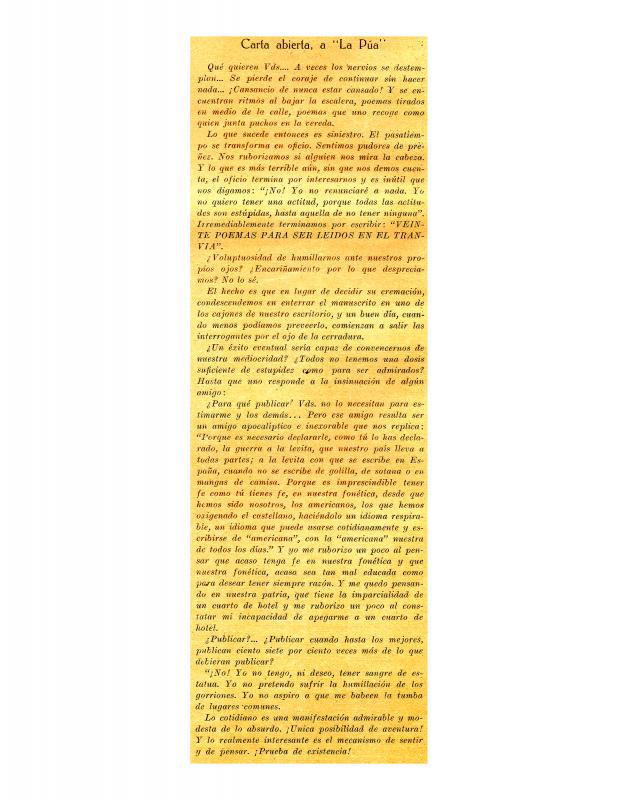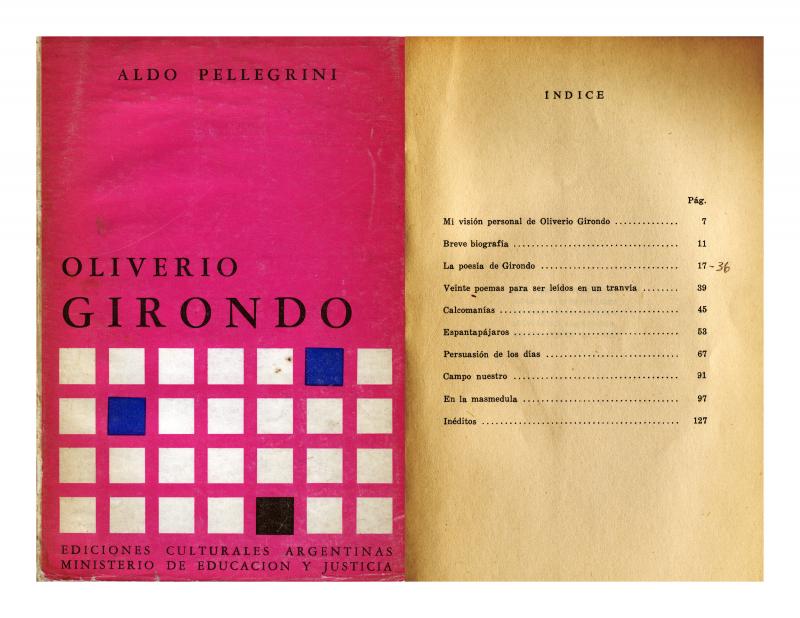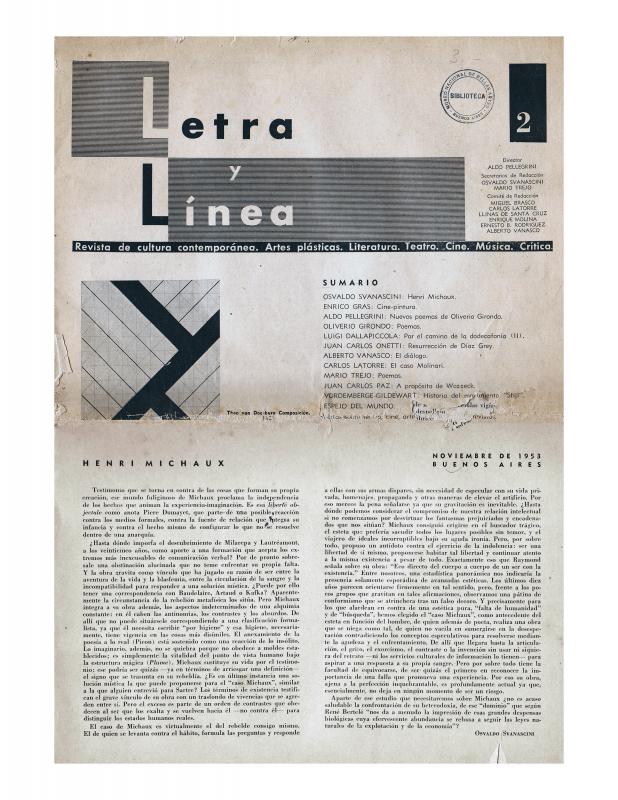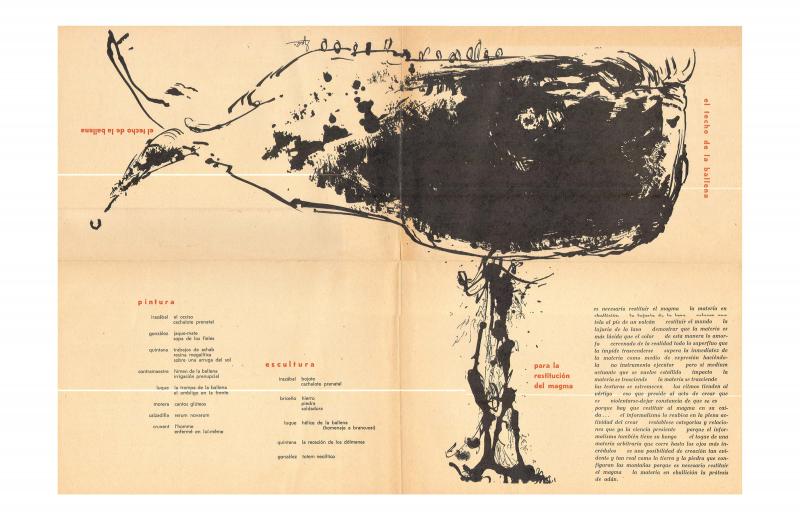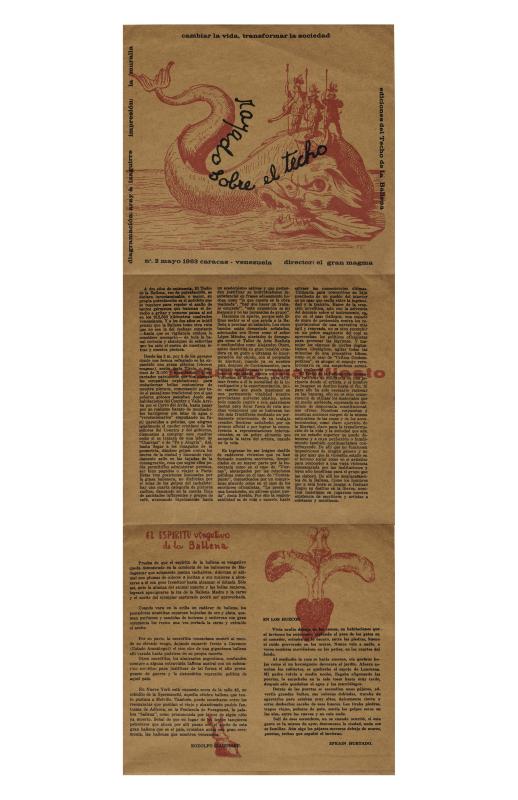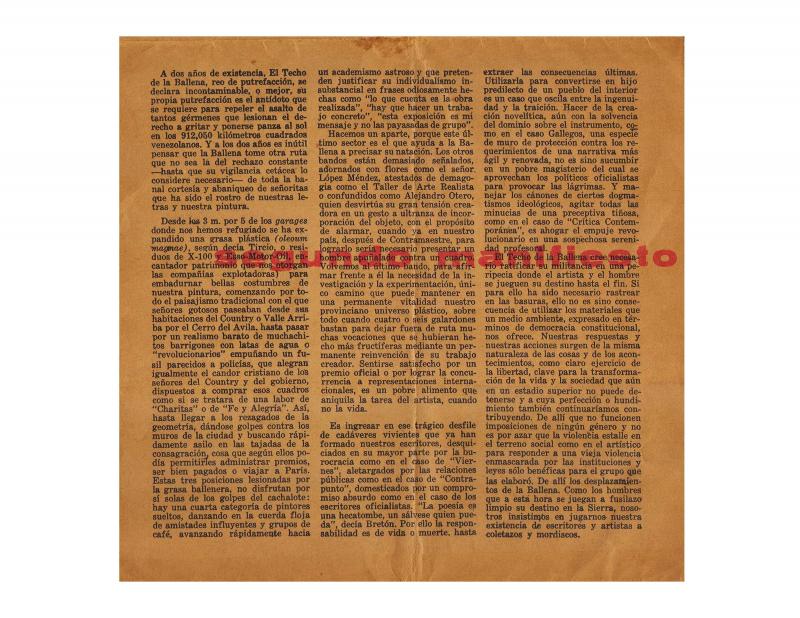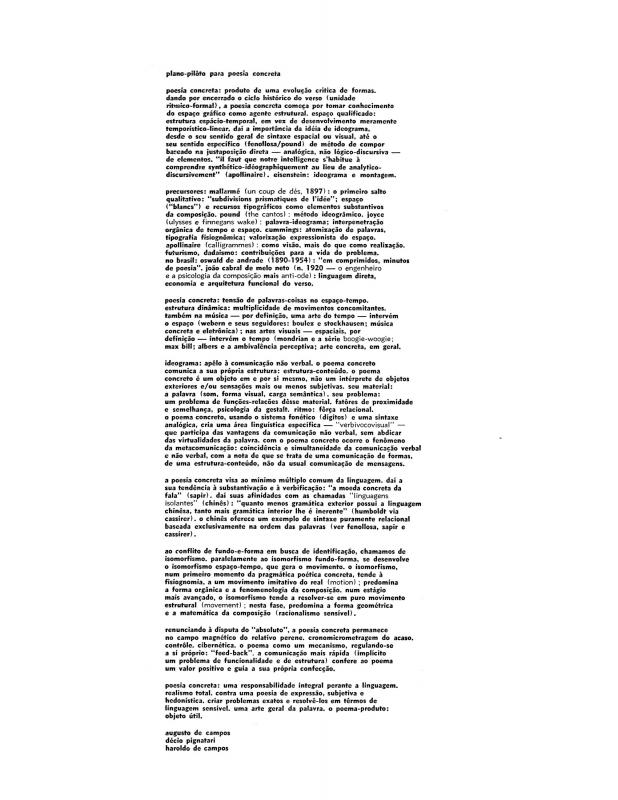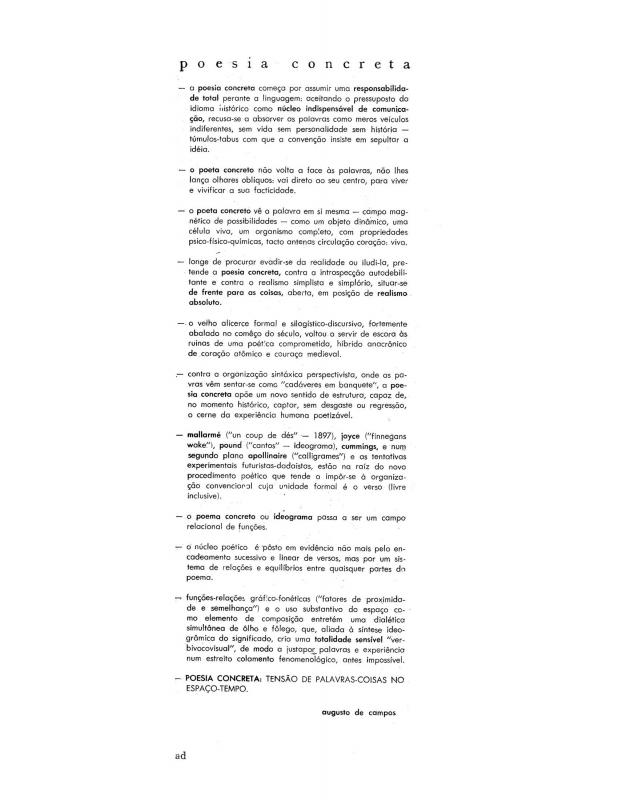Oliverio Girondo (1890–1967) was an Argentine avant-garde poet widely recognized for his contributions to the literary renewal in Buenos Aires in 1920s and 1930s. Together with such writers as Jorge Luis Borges (1899–1986), Raúl González Tuñón (1905–1974), Ricardo Güiraldes (1886–1926), and Leopoldo Marechal (1900–1970), he was associated with the prominent literary magazine Martín Fierro and penned many of its programmatic texts [See ICAA digital archive (docs. no. 732817, 732604, and 733152)]. Among Girondo’s early volumes, the most praised are: Veinte poemas para ser leídos en el tranvía [Twenty poems to be read in the streetcar] (1922), Calcomanías [Decals] (1925), and Espantapájaros [Scarecrow] (1932).
“Topatumba” followed the publication of his last book En la masmédula (Buenos Aires: Editorial Losada, 1954–56) and was originally published as a small-edition print portfolio, illustrated by the Argentine Surrealist poet and painter, Enrique Medina (1910–1997). It was also published with Medina’s drawings by the Venezuelan collective El Techo de la Ballena (Caracas: Ediciones El Techo de la Ballena, 19 April 1963)—the document reproduced here—and in the second expanded edition of En la masmédula (seguido de “Yo tan yo,” “Destino,” “Topatumba,” “Cansancio,” “Mi mito,” “Ella” y otros poemas) (Buenos Aires: Editorial Losada, 1963). The highly experimental nature of these poems made a lasting impact on the generation of much younger artists in Argentina and beyond: the Surrealists poets in Argentina, such as Aldo Pellegrini (1903–1973) and the circles of his Letra y Línea magazine [See (docs. no. 745263 and 745519).]; the aforementioned Venezuelan group El Techo de la Ballena (docs. no. 1142155, 1060254, and 1057677)]; and the Brazilian concrete poetry (docs. no. 1090135 and 1090169).
This text was published in English as “Bump Against the Tomb” in Mari Carmen Rami´rez and He´ctor Olea, eds., Inverted Utopias: Avant-Garde Art in Latin America (New Haven: Yale University Press, 2004), 485-486.

